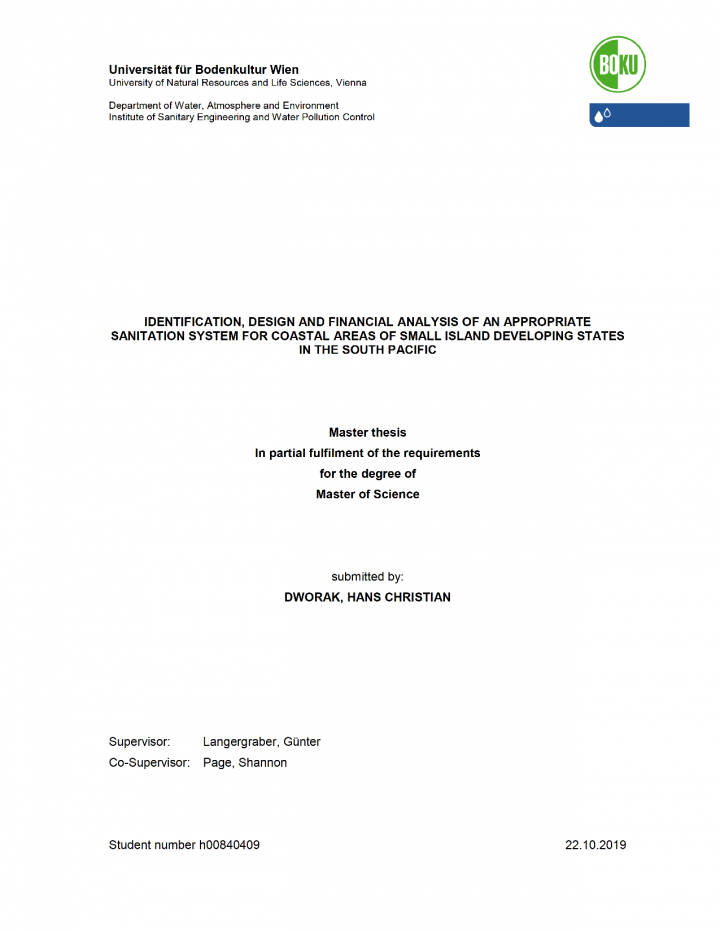Identification, Design and Financial Analysis of an Appropriate Sanitation System for Coastal Areas of Small Island Developing States in the South Pacific - Master Thesis
Dworak, H. C. (2019)

Published in: 2019
Pages: 93
Publisher:
Universität für Bodenkultur (Boku), Vienna, Austria
Author:
Dworak, H. C.
Uploaded by:
SuSanA Admin
Partner profile:
BOKU University, Institute of Sanitary Engineering and Water Pollution Control
2105 Views
67 Downloads
Location of library entry
Rural coastal areas of Small Island Developing States in the South Pacific are often characterized by high groundwater tables, flood proneness and scarce freshwater resources. Thin and permeable soil layers featuring a limited unsaturated zone make the groundwater lens below these islands highly vulnerable to microbiological and chemical contamination. The prevalent sanitation systems (i.e. Single Pit; Dry and Pour-Flush Latrine) may cause serious degradation of groundwater quality. Hence freshwater supply on many small islands is often limited to rainwater harvesting. Flood events may cause toilets to be inoperable and pose a threat to human health by spreading faecal pathogens in the environment. The objective of this thesis is to identify, design and financially analyse an appropriate sanitation system for these rural coastal areas. The problem was approached in a literature review and during on-site research in Vanuatu. Eight sanitation systems were analysed regarding their applicability under the prevalent conditions (i.e. high groundwater table, flood proneness, limited water supply). Urine-Diverting-Dry-Toilets (UDDTs) were identified as appropriate solution. Watertight vaults built above ground make this system most suitable. Crucial design aspects of UDDTs were described and combined with findings form the on-site research. This was the basis for a technical planning of the facility. A financial analysis (comparing the prevalent Pour-Flush Latrine and the UDDT) was conducted for a potential pilot site on Emae, Vanuatu. Bills of Quantity were compiled for both systems and served as basis for the analysis. A Present Value evaluation, including the costs for construction, operation and maintenance, showed that the Pour-Flush Latrine is the preferred option from a financial perspective. Nonetheless, UDDTs are very likely to have a comparatively better Net Present Value to Pour Flush Latrines, if potential benefits and external costs are included.
Bibliographic information
Dworak, H. C. (2019). Identification, Design and Financial Analysis of an Appropriate Sanitation System for Coastal Areas of Small Island Developing States in the South Pacific - Master Thesis. Universität für Bodenkultur (Boku), Vienna, Austria
Filter tags
East Asia & Pacific English Fertiliser Rural Urine Urine diversion dehydration toilets (UDDTs)















